What is sound masking?
Sound masking is the process of adding background noise to make speech less intelligible, thus reducing distractions, protecting speech, and improving comfort.
Or, more simply put, sound masking is noise used to cover other sounds and make them harder to distinguish. When background sounds are harder to distinguish, they're easier to tune out. That's why you can focus so well in a coffee shop even though it's relatively noisy.
It may seem counter intuitive to fight noise with noise, but by adding sound masking you're filling in the sound spectrum which makes speech unintelligible. When speech is unintelligible (hard to understand) it's easier to ignore, often you don't notice it at all. Similar to the hum of your computer, your brain tunes it out. But when speech is intelligible (easy to understand), it can be distracting and make it difficult for people to focus. The laughing colleagues by the water cooler would be drowned out and easily ignored with the proper system.
So what does sound masking sound like? It isn't loud static, rain forest sounds, waves crashing, or music, it's more like ambiance that fits into the background. It sounds like gentle airflow, and if deployed correctly, is barely noticeable. Traditionally, it's played through speakers installed in the ceiling and blends into the existing sounds of a workplace to drown out all of the noise.
Sound masking is NOT noise cancellation.
Sound masking covers a sound. Noise cancellation physically flattens a sound wave. An example of noise cancellation would be earplugs or headphones. The problem with sound cancellation is that there is no organization-wide solution on the market today... unless you plan on buying everyone earplugs! Alternatively, sound masking can easily be deployed throughout buildings and facilities to improve speech privacy and reduce background noise distractions effectively .
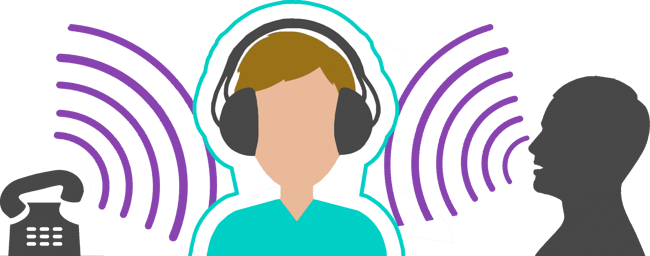
Sound masking is NOT white noise.
White noise is on a different frequency and would be incredibly unpleasant to listen to when played at the necessary level. Imagine what it would be like listening to radio static over the intercom all day. Although white noise is similar to sound masking, it is not a solution for your speech privacy needs. White noise may help you fall asleep at night, but it can't be deployed in a corporate setting. Sound masking, on the other hand, is engineered to match human speech frequencies so it fits smoothly into the background.
So why does all of this matter? With the era of open offices in full swing, people are more distracted than ever. A study by Ipsos found that workers lose up to 86 minutes per day due to noise distractions, be it loud coworkers, printers, ringtones, etc. This leads to the loss of billions of dollars - approximately $600 billion a year. Not only is the loud sound hurting productivity, but it's also negatively affecting other aspects of your employee's lives.
- Lower Job Satisfaction
- Increased Illness and Sick Days
- Higher Levels of Stress and Fatigue
- More Turnover
Speech Privacy
The Center for the Build Environment in San Francisco surveyed more than 25,000 worked in 2,000 buildings and found that acoustic privacy was the number one complaint among workers. These results mirror those found in dozens of other studies, time and time again people complain about acoustic privacy. People don't want their conversations overheard, and those around them don't want to hear their conversations.
The good news is that more speech privacy alleviates these problems. When people feel like they have more privacy, they'll speak more freely and feel better while doing it. Now those open offices “designed” for collaboration might actually lead to more collaborating!
The diagram below is an example of how far sound can travel with and without sound masking. Once a sound masking system is implemented, conversations over 15 feet away will fade into the background. This means the people talking get more privacy and those around them get a can focus better, everybody is happier.
The key to a successful sound masking system lies in the planning. Designers must account for every wall, cubicle, light fixture, building material, etc. If a sound is localized, meaning you can tell where it's coming from, then it will just be another distraction. With effective sound masking, you should be able to walk around without hearing any gaps or differences in the sound. It should be a continuous and seamless sound level wherever you go. Good design, proper spacing of the speakers, and additional network controls can help accomplish this.
Sound Masking in Every Industry
Sound masking can improve your open office environment, but that isn't the only application. It can enhance acoustical comfort in just about every industry and environment, including:
- Healthcare: Hospitals, Patient Rooms, Waiting Areas
- Corporate: Call Centers, Lobbies, Conference Rooms
- Education: Classrooms, Libraries, Student Centers
- Government and Law: Courtrooms, Offices, Secured Facilities
- Finance: Banks, Board Rooms
If you want to help people feel more comfortable and focused, and ensure that private conversations remain private, then you could benefit from sound masking. One study found that after adding sound masking to an open environment:

Conversation Distractions Decreased by 51%

Ability to Focus on Tasks Increased by 48%

Physical Stress Symptoms Decreased by 27%
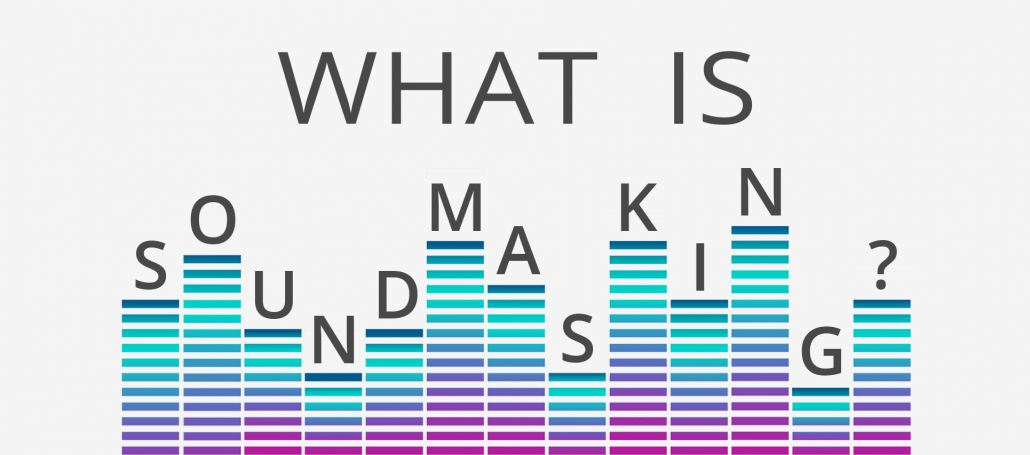
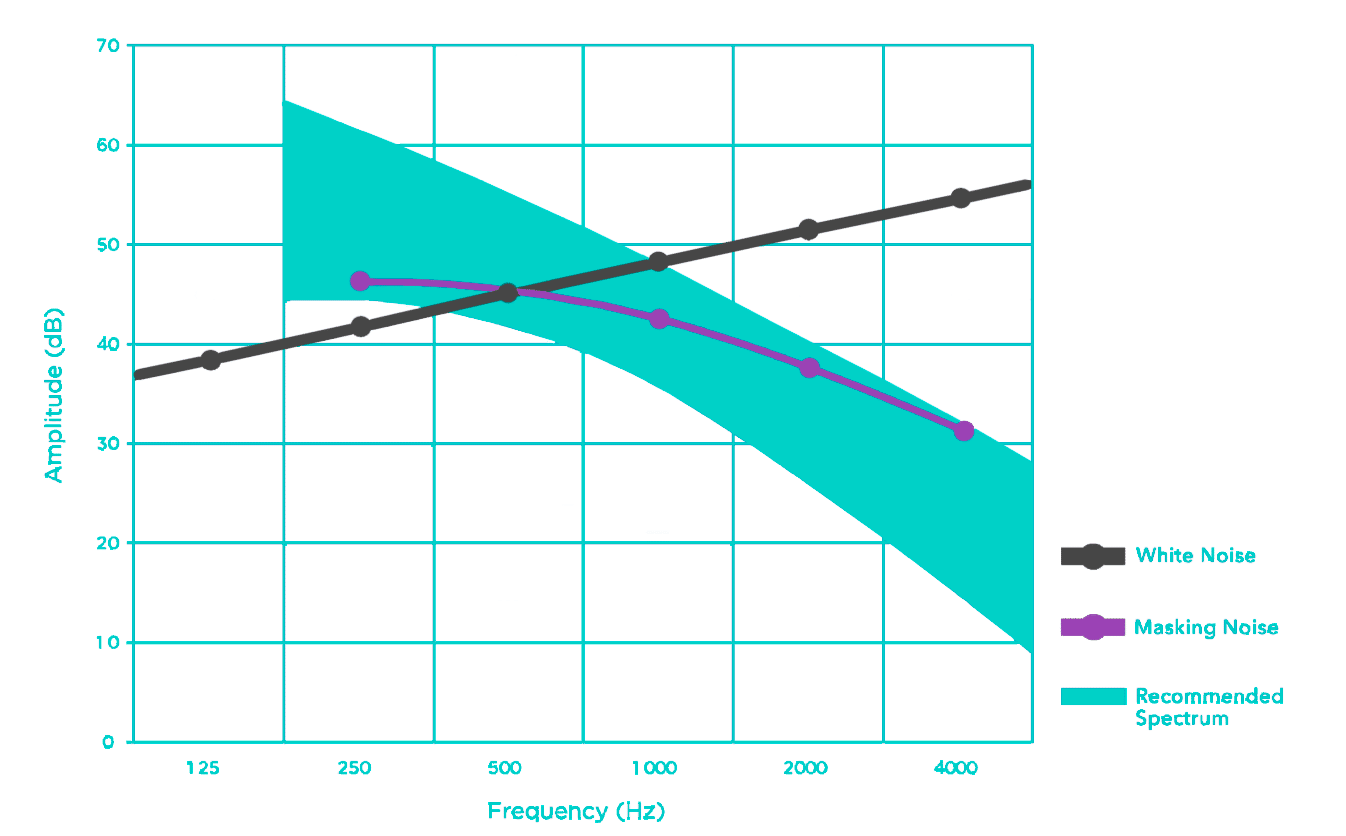
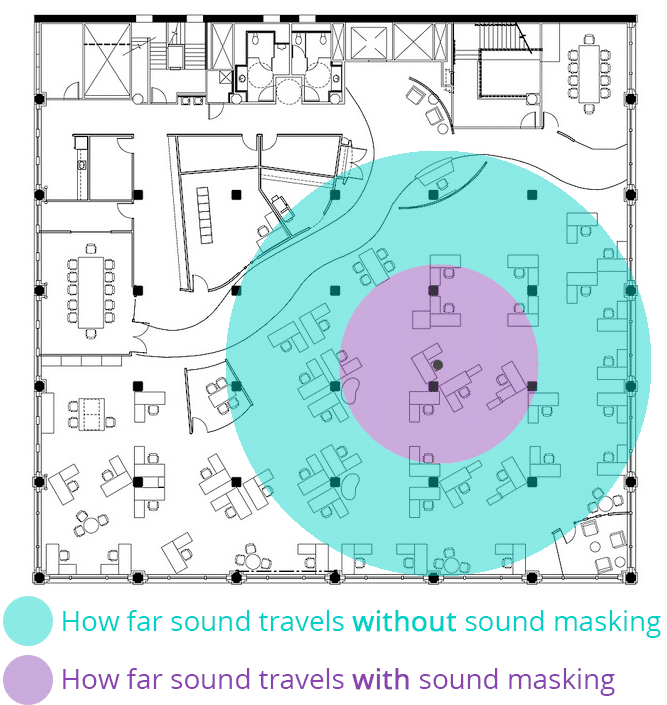

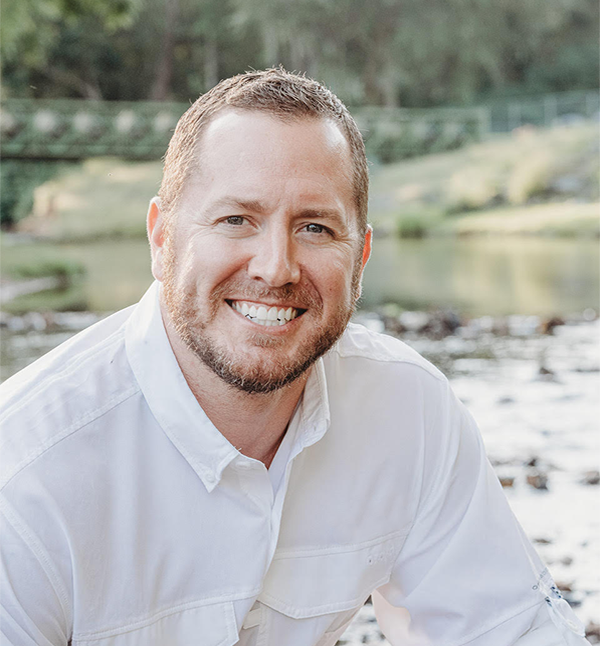
Leave a Comment